
The Agromyzidae are a family of flies, commonly referred to as the leaf-miner flies for the feeding habits of their larvae, most of which are leaf miners on various plants. It includes roughly 2,500 species, they are small, some with wing length of 1 mm. The maximum size is 6.5 mm. Most species are in the range of 2 to 3 mm.
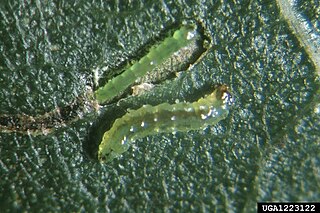
The serpentine leaf miner is the larva of a fly, Liriomyza brassicae, in the family Agromyzidae, the leaf miner flies. It mines wild and cultivated plants, such as cabbage, broccoli, cauliflower and Chinese broccoli.
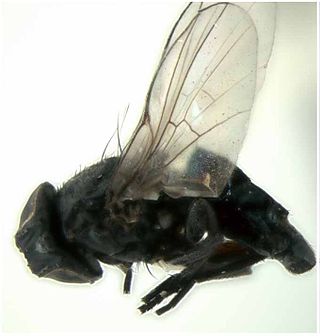
The asparagus miner is a specialist insect that lives on asparagus plants and is a problem for asparagus growers. It is shiny black and occurs in most major asparagus-producing regions of the world.

Phytomyza horticola is a species of leaf-mining fly in the family Agromyzidae of the order Diptera. For a time it was treated as Chromatomyia horticola, but its original name has been restored after genus Chromatomyia was synonymized with Phytomyza. The species is a pest of high economic importance affecting the vegetable crops in temperate and tropical regions.

Ophiomyia is a genus of flies in the family Agromyzidae.
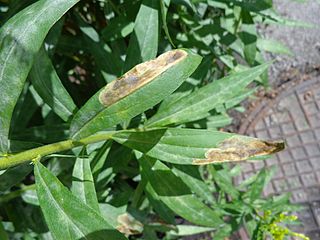
Nemorimyza posticata is a species of fly in the family Agromyzidae. It is found in the Palearctic.
Liriomyza sativae, commonly known as the vegetable leaf miner, is a species of insect, a fly in the family Agromyzidae. The larvae of this fly mine the leaves of a range of vegetables and weeds, but seem to favour plants in the families Cucurbitaceae, Fabaceae and Solanaceae.

Phytoliriomyza is a genus of flies in the family Agromyzidae.
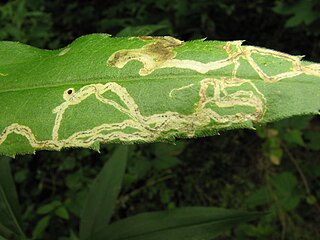
Phytomyza is a genus of leaf miners in the family Agromyzidae.

Calycomyza is a genus of flies in the family Agromyzidae.

Liriomyza is a genus of flies in the family Agromyzidae.
Amauromyza is a genus of flies in the family Agromyzidae.
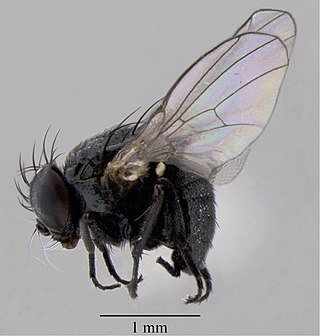
Japanagromyza is a genus of flies in the family Agromyzidae.

Phytobia is a genus of flies in the family Agromyzidae, with a worldwide distribution principally in Europe and the Americas.
Liriomyza langei is a species of fly in the family Agromyzidae.
Pseudonapomyza is a genus of flies in the family Agromyzidae.
Haplopeodes is a genus of flies in the family Agromyzidae.











